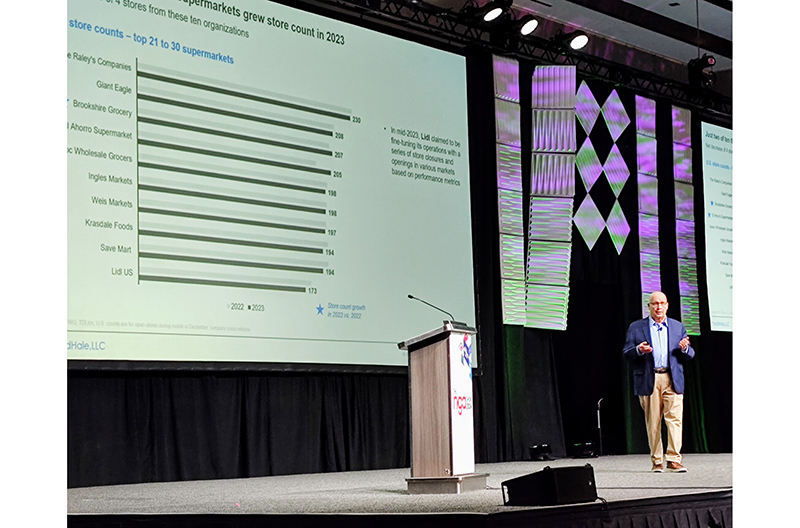The post-pandemic period is offering independent grocers challenges that operationally may pale in comparison to those of the COVID-19 era but are adding pressure to the bottom line and the way supermarket operators are perceived by consumers.
Inflation has driven up the cost of most aspects of doing business in a way that has made it impossible for grocers to fully shield their customers from the impact. In fact, while the inflation rate is about half of what it was a year ago, prices at the grocery store remain inflated far above pre-pandemic levels, noted Todd Hale, retail and consumer trends expert, during his presentation on “Retail Hot Buttons” during the recent 2024 NGA Show.
Average prices are up 24 percent across the store and dollar growth has come at the expense of volume, Hale observed. And while consumers’ economic outlook shows glimmers of brightening, they’re pushing back against price increases by trading down within categories and otherwise stretching their grocery dollars.
To be sure, in the past three years, value retailers have enjoyed the biggest gains at the expense of traditional supermarkets, which are losing status to the convenience and dollar channels, Hale said.
In fact, value-price grocer Aldi has experienced the most store growth, Hale noted – and it appeals to consumers across the economic spectrum: “Low-income and high-income consumers shop value grocery at the same penetration.”
The biggest growth categories are pet care, fresh bakery, dairy and grocery, and supermarkets are leading in most of the top-10 selling categories, including meat, beverages and vegetables.
In particular, private brands have made significant gains over the past two years, as resources are redirected back from brands where they were focused during the limited supply conditions of the pandemic. Hale observed that private brands have gained share across the store, led by bakery, dairy, deli and meat, and have even gained units in general merchandise.
Meanwhile, grocery has been losing the ground it gained against restaurants during the pandemic, as the shift from food at home to away from home has resumed, he said.
And inflation has stunted the growth in health and wellness, driving price over wellness as the key factor in food choices, and growth of organic claims is low versus total store.
Through it all, retailers must do more to appeal to a younger, more ethnically diverse consumer base. “We’ve never been more diverse,” Hale said, noting that growth is being fueled by Asian and Hispanic consumers. Additionally, two-thirds of consumers will be Millennials or younger by 2030.
“How are you managing your growth?” Hale queried, noting that success will hinge on several key factors including how grocery retailers do the following:
- React to spending-power issues facing shoppers (pricing and promotion decisions)
- Respond to evolving flavor/health and meal preparation trends
- Manage the store – whether to build, remodel, buy, sell or close
- Manage physical vs. digital
- Balance people vs. automation
- Innovate and respond to competitive actions
Save the date for the 2025 NGA Show: Feb. 23-25, 2025, at Caesars Forum in Las Vegas.

